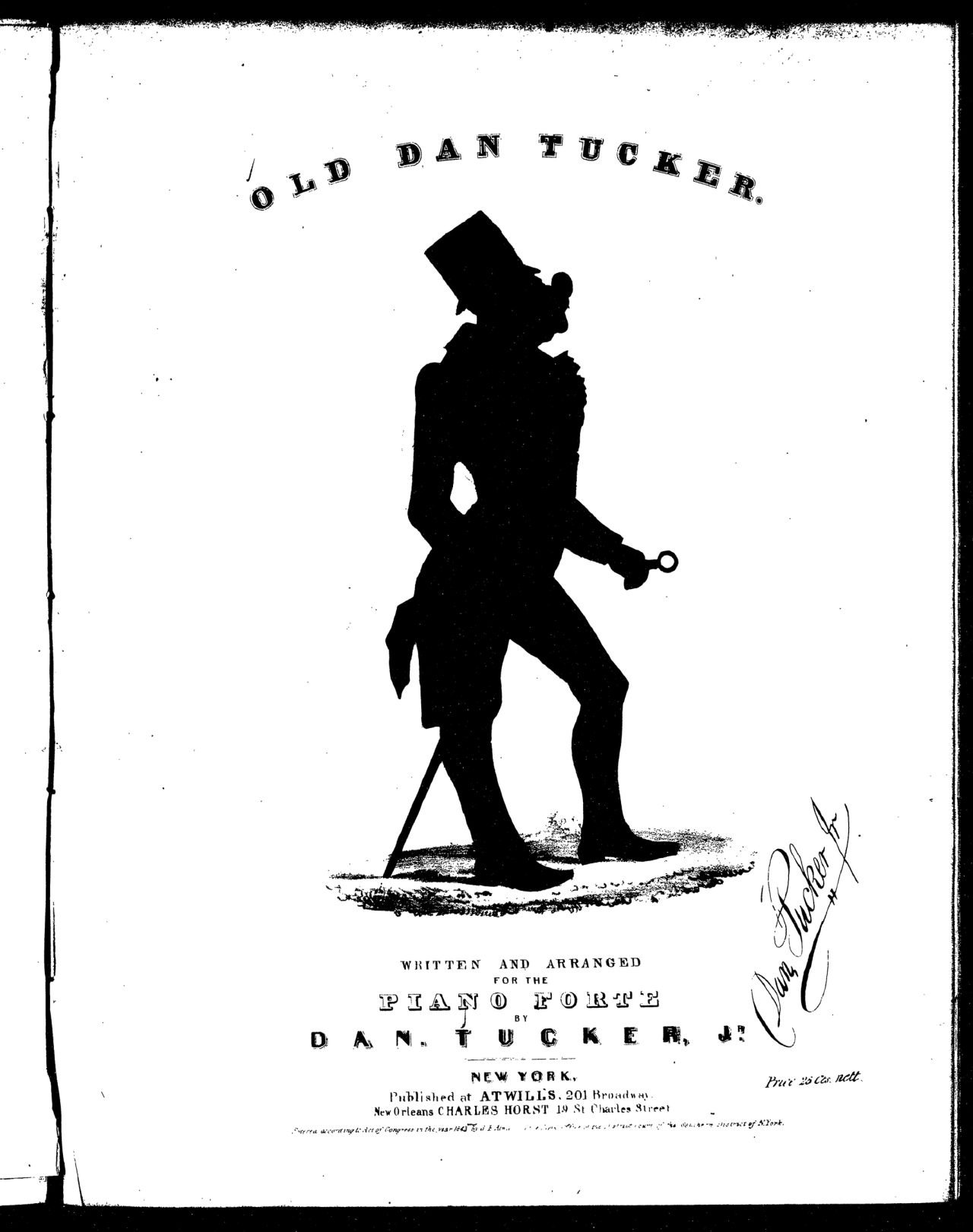EXPERIENCES WITH OLD DAN TUCKER
June 16, 2019
by Valerie Diaz Leroy
We sang Robert DeCormier’s arrangement of “Old Dan Tucker” in my middle, or possibly my high school choir. I loved this song so much that I kept the sheet music tucked away with my other precious song collections. The song was lively and silly and facilitated a grand performance on the choir’s part. The lyrics encouraged us to accent certain words and phrases and afforded us full liberty to play a foolish character on stage.
I didn’t hear a non-choral version of “Old Dan Tucker” until I started playing the banjo, in a Minstrel Banjo class instructed by ethnomusicologist Greg C. Adams. As we learned to play “Old Dan Tucker” I was told this song came from the tradition of blackface minstrelsy. Greg shared the history of blackface minstrelsy and helped me understand that it was America’s first pop music. It was in Greg’s class that I was first given the tools to decode the lyrics. Everyone’s favorite verse goes something like this:
Old Dan Tucker was a fine old man
Washed his face in a frying pan
Combed his head with a wagon wheel
Died of a toothache in his heel
Simply, I used to laugh at this silly verse. What I didn’t innocently realize in primary school was that “Old Dan Tucker” was meant to represent the caricature of the dim-witted African American. As an educator, after some research and reflection, I understood that I had a responsibility to share what I had learned about this beloved song.
During my last year as a classroom teacher, I chose to guide my students through thorough exposure of inquiry about the banjo. They posed questions, digitally, to banjo builders, historians, and performers. These experts generously took the time to let my students know how and why they identified so strongly with the banjo. I walked students through a historical perspective of the banjo to show the organological changes to the banjo over time by giving them a hands-on experience with an early banjo, an open back, and a resonator banjo.
Our year of study included learning about how the present-day banjo evolved. We spoke of its ancestry in Western African traditions and how the ekonting was one of many full-spiked lutes that likely helped form the banjo we know today. To enhance this experience, students also built ekontings with the art teacher. The transatlantic slave trade, the unjust conditions for Africans and African Americans, and blackface minstrelsy were all topics that we discussed in class. As a K-4 elementary music teacher, I made sure to keep the language and topics discussed developmentally appropriate so that students’ understanding was enhanced. While we spoke of blackface minstrelsy in 3rd and 4th grade I did not share primary source images in class. Our discussions allowed students to think critically about the fact that the whole art form of blackface minstrelsy was devoted to the denigration and mockery of a group of people. Students were able to relate this form of mockery to perceived unkind behavior they had witnessed or been victims of.
I shared the story of “Old Dan Tucker” with my third graders and guided them as they analyzed the text. They were insightful and understood the weight of the words. When they performed “Old Dan Tucker” they offered an air of seriousness that I’d never felt before when performing the song.
Years later I have taken a deeper dive into understanding the history of many of the songs we use and have used in the classroom. This reflection has brought me to the understanding that there are pieces we should enjoy, analyze, and continue to perform. There are other songs that should be used as a social teaching tool. Songs like “Old Dan Tucker” fall into the latter category. While my students handled the performance of this song with remarkable maturity, I would now choose a different song for them to perform. There is no purpose served in asking students to internalize and share music that has a history steeped in oppression. This moment of growth inspired me after I left the classroom, but I feel it is important to share and stay transparent as I reflect on the potential impact that certain experiences can have on students. We must continue to learn and grow so that we can set the best example for our students and colleagues. I believe we can continue to do better every day.
